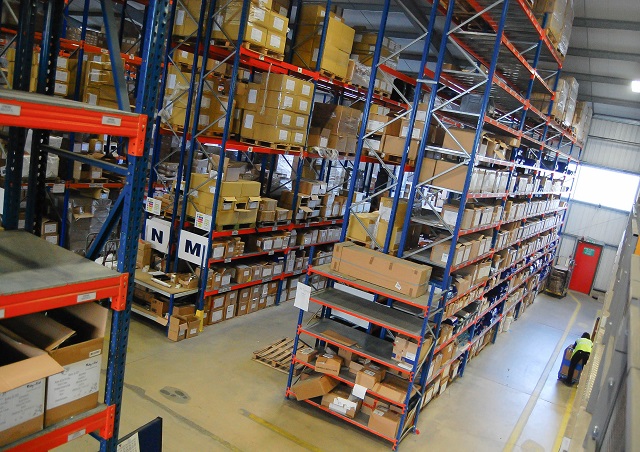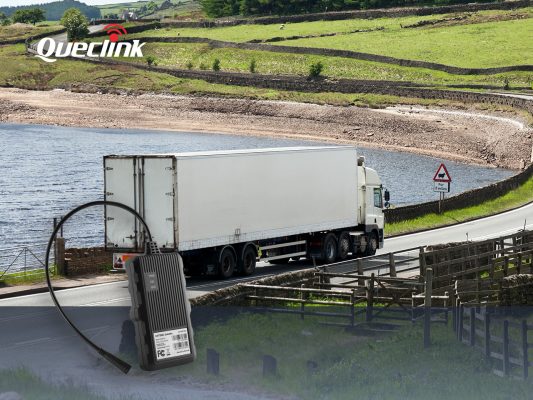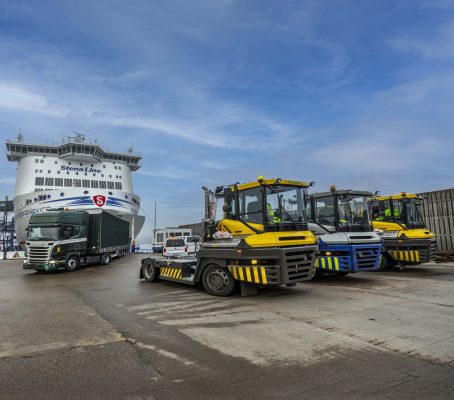Manual handling remains a significant safety concern in the logistics sector. The movement of goods, especially between levels within a warehouse or distribution centre, creates daily risks for employees. Lifting, carrying, and moving heavy items without the right support can lead to strain and injury.
These incidents harm individuals and can hinder operational efficiency. Addressing manual handling risks is essential for logistics hubs aiming to maintain consistent performance while safeguarding their workforce.
Addressing Risk Through Infrastructure Investment
Relying solely on training and procedural improvements is no longer sufficient. A growing number of logistics facilities now prioritise infrastructure enhancements to reduce manual labour and improve operational flow. Systems that automate the movement of goods between different heights are especially valuable, removing the need for staff to lift or carry loads manually.
This is where solutions such as goods lifts play a vital role. Advanced Handling, for example, offers a range of goods lift systems that help streamline operations and reduce physical strain on staff. These lifts can be integrated into existing facilities and tailored to specific operational requirements, providing both safety and efficiency benefits.
Risk Hotspots in Distribution Environments
Several parts of a logistics hub present elevated risks. Loading bays, where goods are transferred between vehicles and storage zones, often involve uneven surfaces or height differentials. Without dedicated equipment, workers must physically handle items, increasing the chance of injury.
Multi-level storage areas present another challenge. In mezzanines or vertical storage zones, items must be moved up and down between levels, typically requiring repetitive lifting. Cross-docking facilities also pose manual handling risks as goods are moved quickly from inbound to outbound vehicles, often across varying elevations.
Parcel sorting and cold storage areas bring additional complexity. Sorting centres operate at high volume and speed, and cold environments make muscles more susceptible to strain. In each of these scenarios, the combination of repetition and awkward positioning increases the chance of injury.
Developing a Practical Risk Assessment Approach
A comprehensive risk assessment forms the foundation of any effective manual handling strategy. Managers must carry out a full evaluation of all lifting, pushing, pulling, and carrying tasks throughout the site. This assessment should consider the type and weight of items, distances moved, and how often tasks are performed.
Creating a risk matrix helps prioritise which tasks demand immediate attention. Assigning priority based on task frequency, load weight, and observed incidents enables teams to focus resources where they will have the most impact.
Documentation plays a key role in compliance and ongoing review. Managers should record the types of risks identified, steps taken to reduce exposure, and any improvements observed over time. These records also help demonstrate due diligence during audits and inspections.
Employee input is crucial. Those directly involved in manual handling tasks often offer insight into pain points and practical solutions. Including their perspectives in the risk assessment process ensures solutions are more accurate and better adopted.
Equipment-Based Solutions for Safer Workflows
Mechanical handling equipment remains one of the most effective ways to eliminate the need for physical lifting. Goods lifts, in particular, support safe vertical transport of goods across multiple floors. This reduces the pressure on workers and helps standardise movement across all levels of the facility.
Available in a variety of capacities, from light loads to heavy-duty items, goods lifts are suitable for a broad range of warehousing operations. Their design can be adapted to fit space limitations, workflow patterns, and integration with other systems such as conveyors or guided vehicles.
Compliance with health and safety standards is essential. Equipment should include features such as emergency stops, overload protection, and sensors to detect blockages or unsafe use. Meeting UK and European safety guidelines ensures that businesses meet regulatory requirements while protecting their staff.
Planning for Implementation Without Disruption
When introducing any new equipment, careful planning is needed to maintain workflow continuity. While smaller lifting systems can be installed quickly, more advanced setups may require longer timelines and integration with current operations. Consulting with suppliers to establish realistic delivery and installation schedules is vital.
Phased rollouts can minimise disruption, allowing one area to remain active while another undergoes installation. Scheduling work during off-peak hours or over weekends can further reduce the impact on productivity.
Operator training is a fundamental part of implementation. All relevant staff must be confident using the equipment safely and effectively. This includes understanding emergency procedures and basic troubleshooting. Keeping training records up to date ensures consistent safe operation over time.
Maintenance must also be factored in. Regular checks and servicing extend the life of the equipment and reduce the risk of breakdowns. Preventative maintenance contracts can support long-term reliability and safety.
Moving from Assessment to Long-Term Action
Risk assessments must lead to real changes to have any value. Turning identified risks into tangible improvements requires logistics managers to create an actionable plan. This includes clear goals, defined responsibilities, and timelines for each phase.
Visual diagrams can help identify and communicate priority zones within the facility. These might highlight high-risk areas such as mezzanine transitions, parcel sorting areas, and cold storage sections. Colour-coding based on risk level helps teams understand where focus is needed most.
A step-by-step checklist supports systematic documentation and rollout. This includes listing manual handling tasks, measuring weights, logging task frequency, and gathering worker feedback. Evaluating the effectiveness of solutions over time ensures that safety improvements continue to deliver value.
Assigning specific managers to oversee each stage helps maintain momentum. Regular performance reviews, ideally held quarterly, should include incident tracking, feedback analysis, and progress against implementation goals.
Creating Safer Workplaces Through Smarter Handling Solutions
Manual handling remains a persistent challenge in logistics hubs, but the tools and strategies to address it are readily available. From structured risk assessments to installing goods lifts and other vertical transport systems, logistics professionals have the means to improve safety and efficiency. With the right investment in equipment and a proactive approach to implementation, businesses can significantly reduce injury rates and create a safer, more productive environment for their teams.



